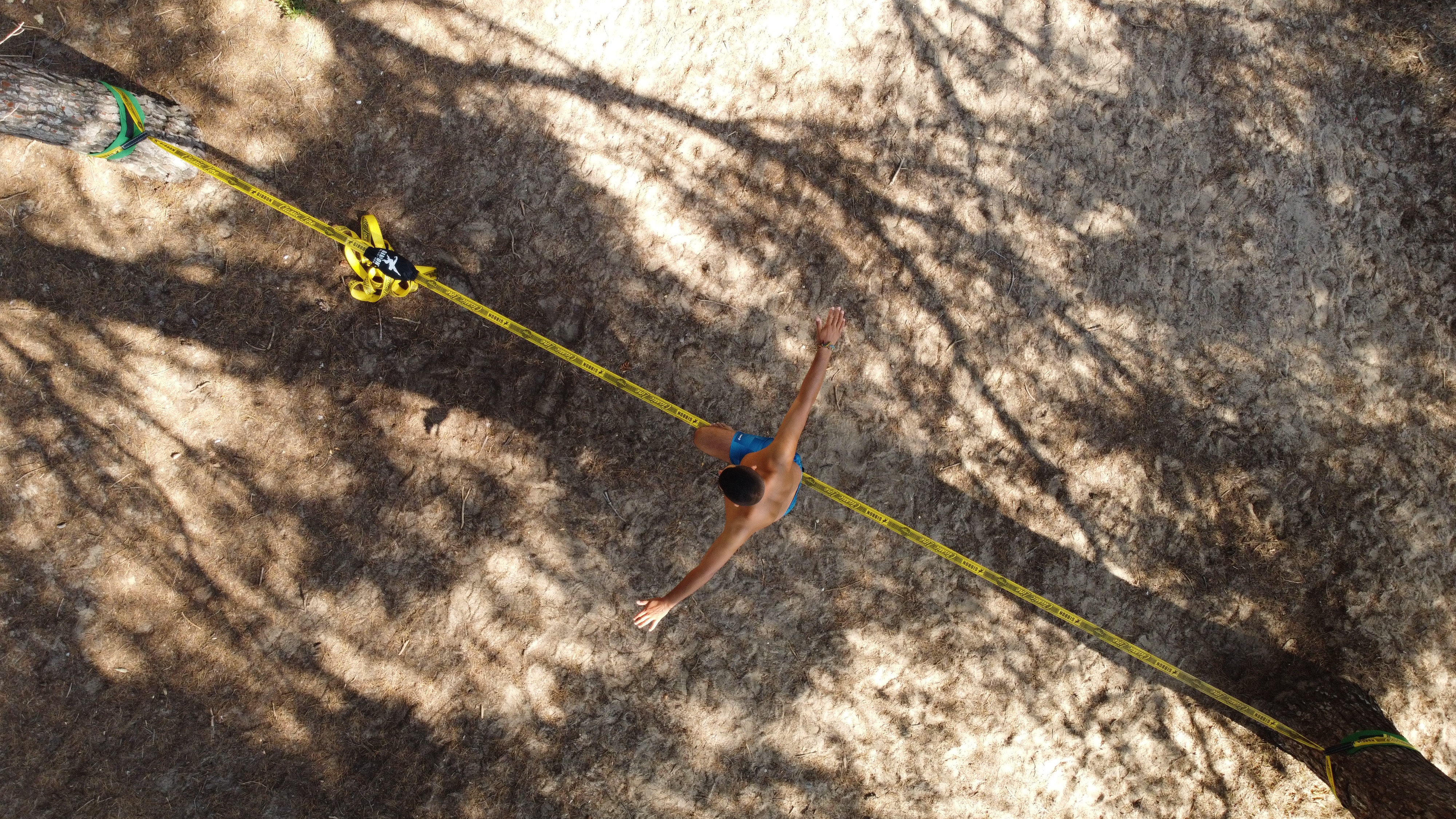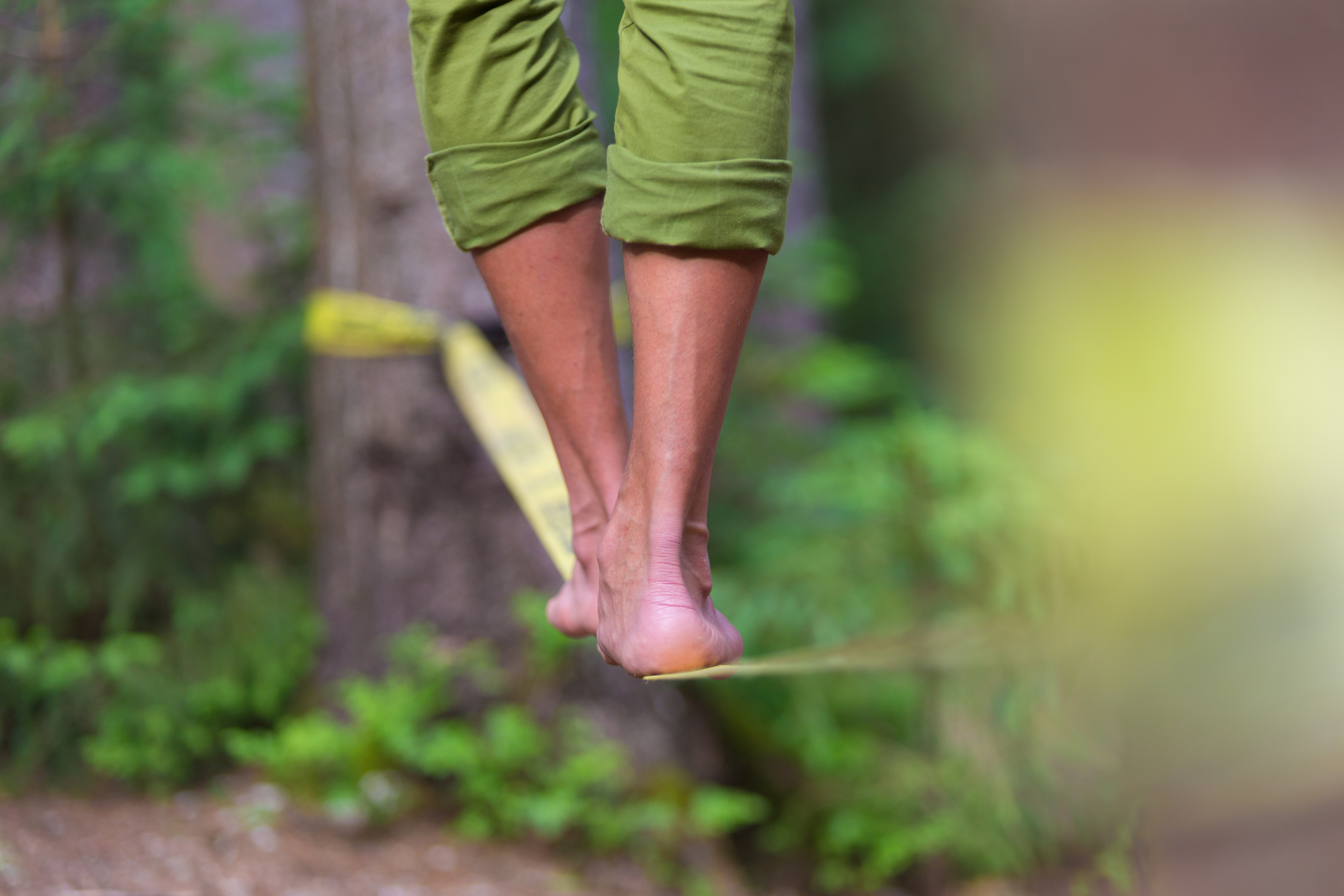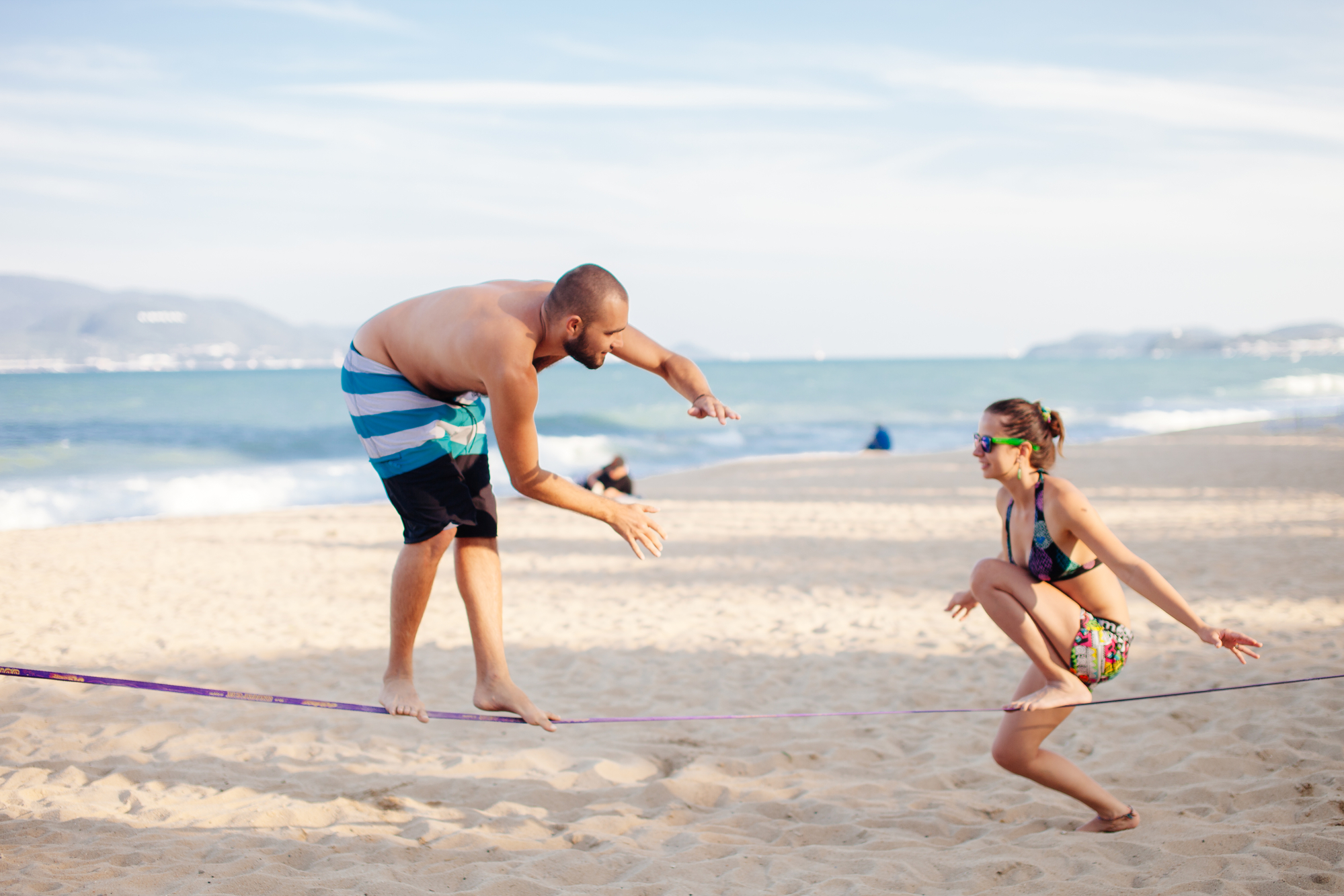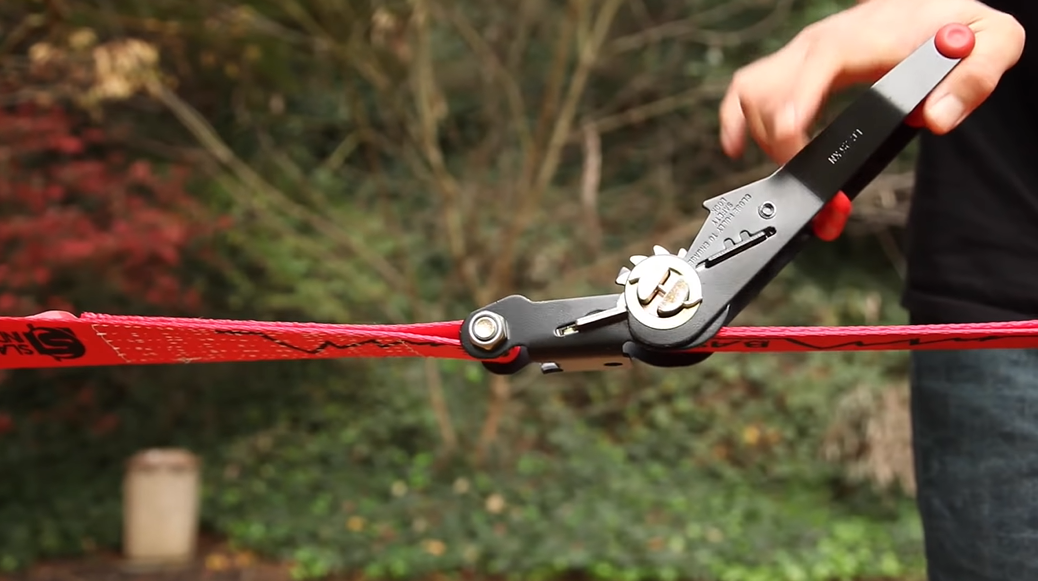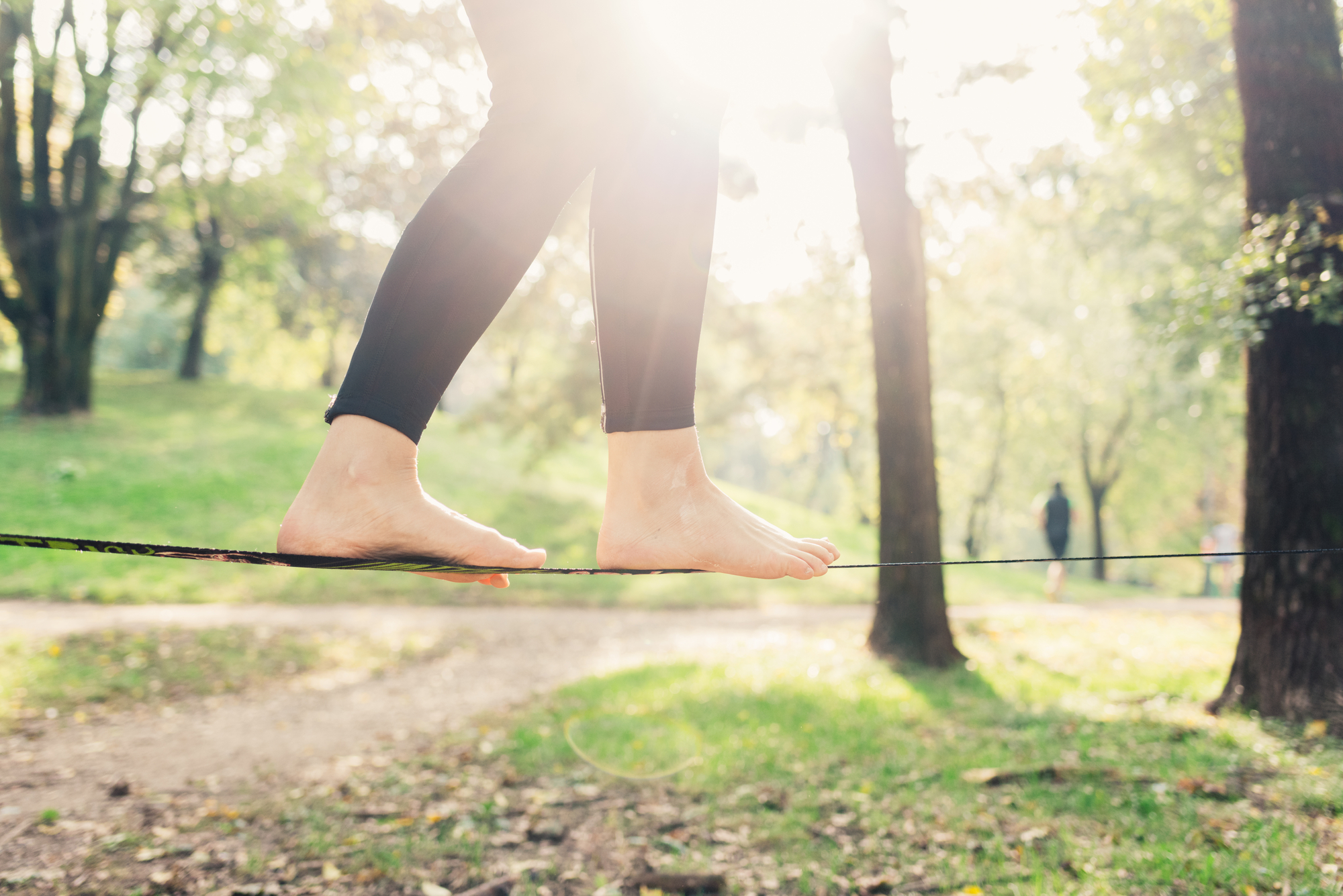Do you ever feel like you need a new challenge in your life? Something to test your balance and strength? If so, then you should try slacklining! Slacklining is a relatively new sport that is growing in popularity.
It involves walking or balancing on a flexible rope tensioned between two anchors. Sounds difficult? It is! But that's what makes it so much fun.
We will teach you all about slacklining – from how to get started to the possible types of tricks. Are you ready to take on the challenge?
What is Slacklining?
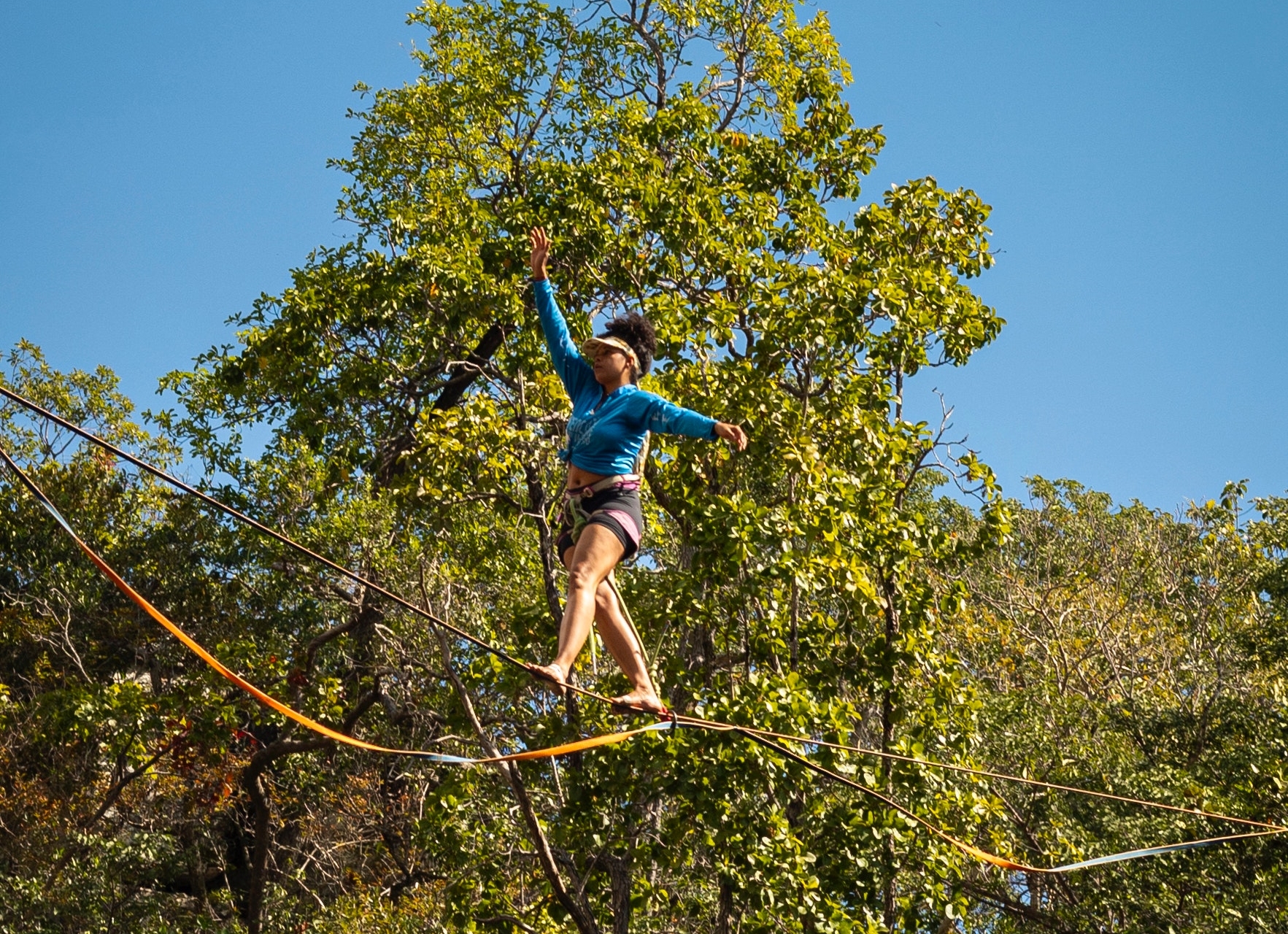
Slacklining is the act of walking or balancing along a narrow, flexible strip of webbing that is tensioned between two anchor points.
The line can be as low as a few inches off the ground or as high as 20 feet (or more!) in the air.
The sport originated in the climbing community as a way to stay fit and improve balance while waiting for climbing partners. It quickly caught on as its own activity, with people of all ages and abilities enjoying the challenge it provides.
Nowadays, you can find slacklines in parks, playgrounds, music festivals, and other events.
What Are The Benefits of Slacklining?
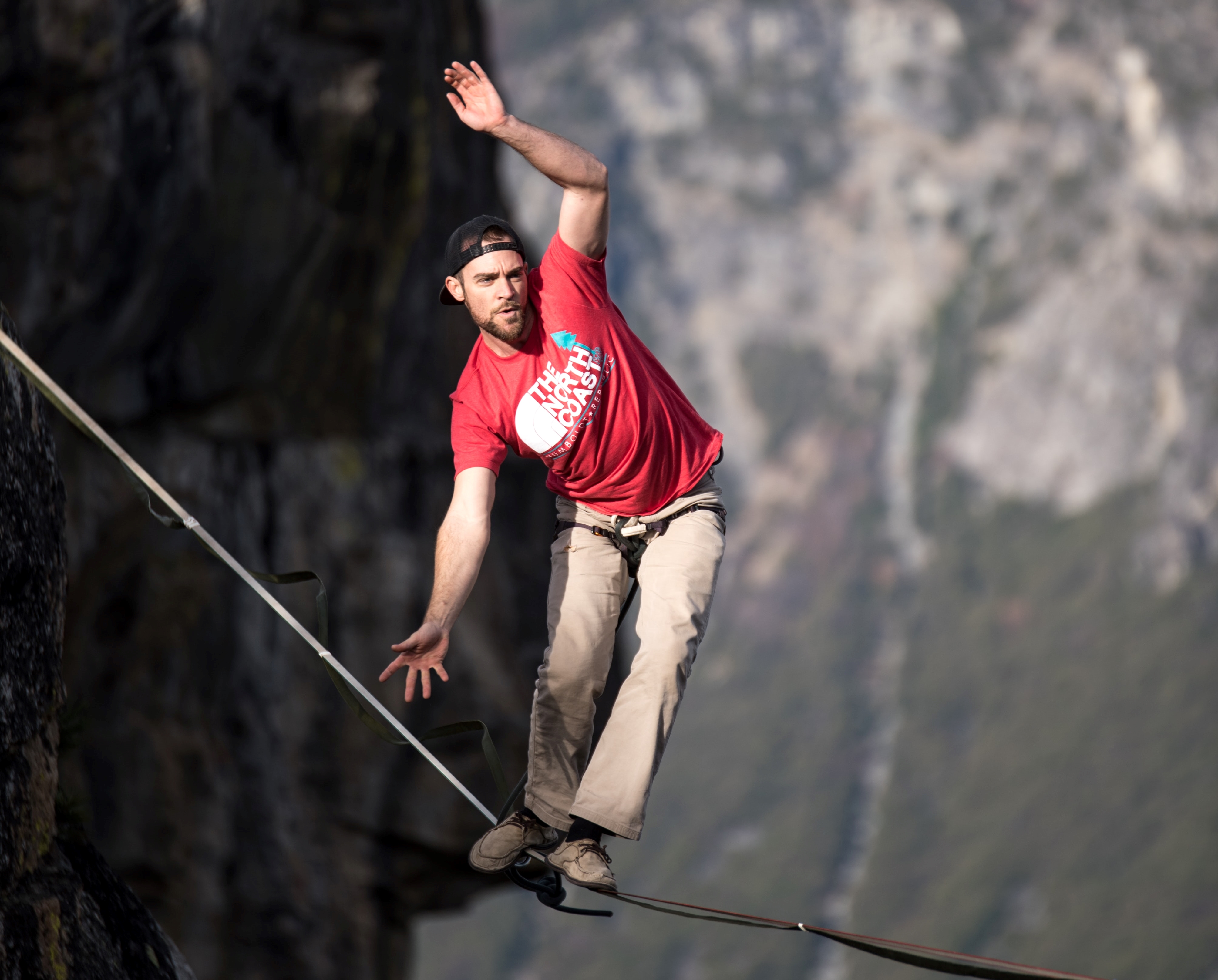
Slacklining holds many benefits, both physical and mental. Here are just a few:
1. Sharpens Focus
One of the challenges of slacklining is staying focused on the task. This can be difficult as your mind will want to wander. However, the more you practice, the better you'll get at keeping your focus sharp. This improved focus can then carry over into other areas of your life.
Slacklining also provides an excellent opportunity to be present at the moment and appreciate your surroundings.
When you're balancing on a line, you can't be thinking about anything else but the task at hand. This can help to clear your mind and reduce stress levels.
2. Injury Prevention
Slacklining can help improve your balance and proprioception (the ability to sense the position of your body in space).
This is because the line is constantly moving, forcing you to make minor adjustments to stay upright.
Improved balance and proprioception can lead to fewer injuries on and off the slackline.
In addition, slacklining can help to strengthen the muscles and joints around your ankles, knees, and hips – areas that are particularly susceptible to injury.
So not only can slacklining help you prevent injuries, but it can also aid in the rehabilitation of existing injuries.
3. Better Posture
You have to engage your core muscles to stay upright when you're slacklining. This can help to improve your posture and prevent back pain.
In addition, the act of balancing on a narrow strip of webbing forces you to use small stabilizing muscles that are often neglected in day-to-day life.
By strengthening these muscles, you can help to improve your posture and reduce the risk of pain or injury.
4. Improves Balance
This one is pretty obvious – slacklining requires excellent balance!
But did you know that balancing on a slackline can actually help improve your overall balance?
Over time, these adjustments can help to improve your balance and coordination. This can help you perform better in other activities that require good balance, such as skiing, surfing, or rock climbing.
5. Full Body Workout
Slacklining is a full-body workout. In addition to engaging your core muscles, you'll also use your arms, legs, and back muscles to keep you balanced.
And because the line is constantly moving, your muscles will never get too comfortable – meaning you can get a great workout in a short amount of time.
So whether you're looking to improve your balance and coordination or just looking for a new and challenging workout, slacklining is an excellent option.
6. Sport Specific Training
Slacklining can also be used as a training tool for other sports.
Many climbers use slacklines to improve their balance, coordination, and mental focus.
In addition, slacklining can be used to train for other activities that require good balance, such as skiing or surfing.
So if you're looking to improve your performance in another sport, slacklining can be a great way to do it.
What Are The Different Types of Slacklining?
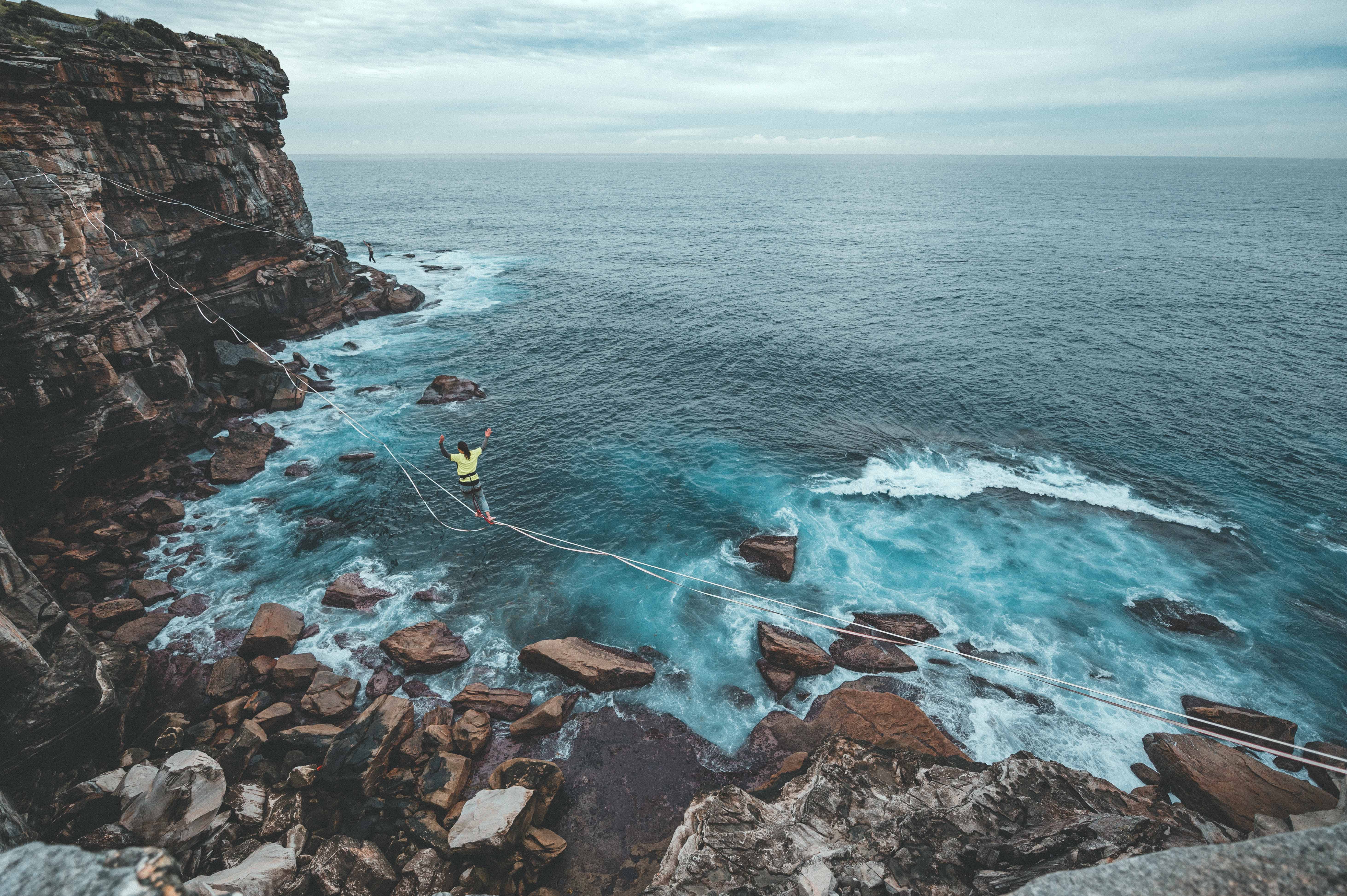
There are actually a couple of different types of slacklining, each with its own set of benefits.
1. Rodeoline
Rodeoline is a type of slackline with no tension at all. It may appear challenging to balance on this sort of line at first.
Suppose you stick it out and overcome the early days of confusion. In that case, your body will realize what it must do to maintain a zero-tension line.
The only tension that the line senses is the slackliner's body weight.
2. Yoga line
Yoga line is a type of slackline that has just enough tension to support the weight of the slackliner.
In this case, you'll balance on a one-inch wide piece of webbing suspended over the air while performing yoga postures.
Slacklines encourage you to extend your reach and sense of balance, making difficult yoga postures more challenging.
This can lead to deeper and longer-held stretches and a better sense of balance both on and off the line.
3. Trickline
Slackliners generally take a step-up to attempt a trickline once they've mastered walking, balancing, and tiny jumps on a basic line.
A trickline is a more robust version of the same line with slings, a safe release strap, and two ratchets (sometimes this type of kit can even include a pulley system).
It is easy to put the line into a greater tension using the extra ratchet, which makes trickling a more active activity, with the ability to perform jumps and flips.
Keep in mind that the trickline requires a suitable distance between anchor points to function properly.
4. Highline
The most extreme kind of slackline, the highline is not for the faint of heart.
This type of slacklining is done at great heights, often with nothing but a safety harness to keep you from falling.
Highlights are typically only attempted by experienced slackliners who have mastered the basics and are looking for a new challenge.
The sensation of flying is comparable to that of a hang glider or paraglider. It's one of the most thrilling experiences you'll ever have, and it's also pretty addicting!
The highline is kept safe throughout the entire climb by a harness connected to the main slackline line and, at the same time, to a lifeline, slackline webbing, or rope.
The exception is free solo, in which the climber is deliberately unsafe.
5. Waterline
Waterlines are, as the name suggests, slacklines over water.
They can be set up in a swimming pool, a lake, or even the ocean.
The most important thing to remember when setting up a waterline is that the anchor points must be secure, and the line must be taut.
You don't want the line to sag in the middle and dump you into the water!
Waterlines are a great way to cool off on a hot day, and they're also a lot of fun.
Are There Any International Slackline Competitions?
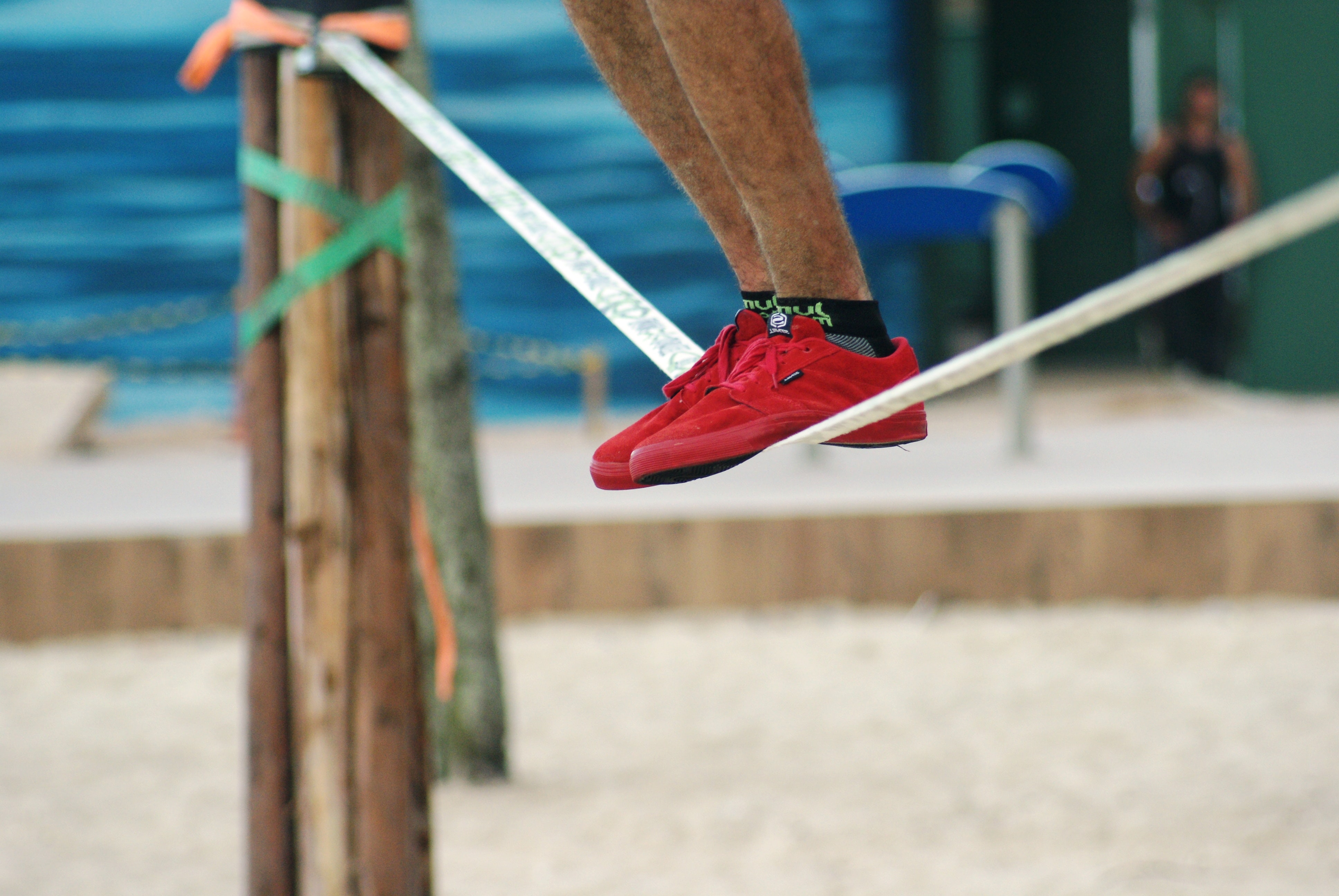
If you're looking to take your slacklining to the next level, there are actually international competitions that you can participate in.
Some of the most renowned slackline competitions include:
- The World Slackline Masters
- World Slackline Federation Championships
- GoPro Mountain Games
Each of these competitions attracts some of the best slackliners from all over the world.
If you're looking to test your skills against some of the best in the sport, these are the events for you.
Conclusion
Slacklining is a great way to get outside and enjoy the fresh air. It's also an excellent workout for your mind and body.
Slacklining is an excellent option if you're looking for a new hobby.
There are many different types of slacklines to choose from, so there's sure to be one that's perfect for you.
As long as you follow the basic safety guidelines, slacklining is a safe and fun activity for people of all ages.
So what are you waiting for? Get out there and give it a try! You might just surprise yourself at how much you enjoy it.

